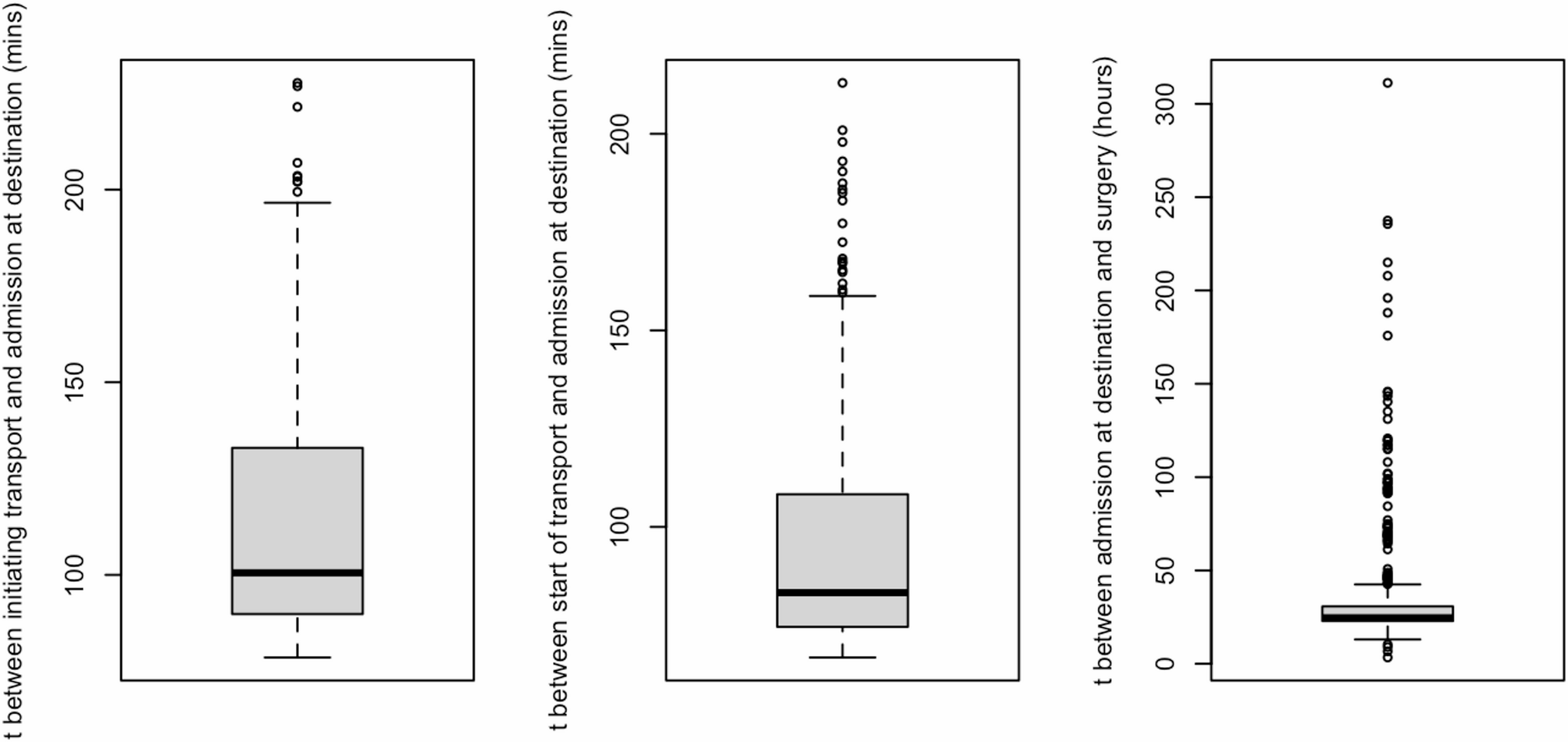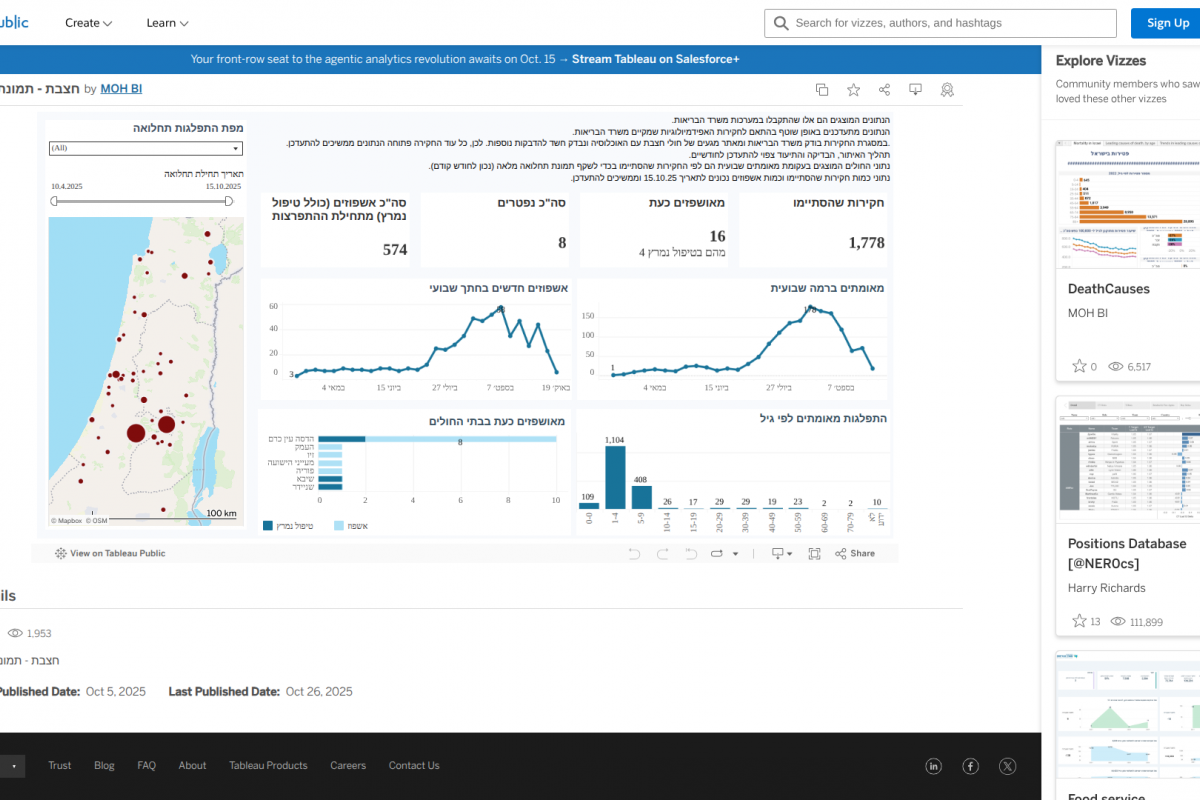Low Earth orbit might seem like empty space, but for the thousands of satellites circling our planet between 95 and 1,900 km up, it’s actually a surprisingly hostile environment. Every moment, these spacecraft are bombarded by highly…
Blog
-

AI can help authors beat writer’s block, says Bloomsbury chief | Bloomsbury
Authors will come to rely on artificial intelligence to help them beat writer’s block, the boss of the book publisher Bloomsbury has said.
Nigel Newton, the founder and chief executive of the publisher behind the Harry Potter series, said the…
Continue Reading
-

Development of a coordinated interhospital transfer program for cardiac surgery patients | Journal of Cardiothoracic Surgery
This study underscores the efficacy of a structured interhospital transfer program in managing patients requiring various levels of cardiac surgical intervention. Key findings reveal distinct patterns in patient characteristics, urgency classifications, and clinical outcomes, similar findings were found in a study from Sanaiha et al. [7]. Emergent patients displayed significantly higher rates of myocardial infarction, preoperative shock, and mechanical ventilation, which correlated with an elevated in-hospital mortality rate of 6.9%, findings consistent with these were reported by Metkus [8]. These results were not surprising, as those criteria are, per se, predictors of in-hospital mortality in the STS Score and the EuroSCORE II [9, 10]. In contrast, urgent and elective patients had lower mortality rates and reduced preoperative risk profiles. At Düsseldorf University Hospital, we operated on an average of 1,650 patients per year. The overall in-hospital mortality rate was 5.2%. Stratified by urgency, the mortality rate was 2.0% for elective cases, 5.2% for urgent cases, and 16% for emergency cases. The markedly high mortality rate among emergency patients can be attributed, among other factors, to the high proportion of in-house resuscitations from other departments within the university hospital, as well as to the frequent admissions following out-of-hospital cardiac arrests, given our role as a major cardiac arrest center. Interestingly, the emergency patient cohort transferred from the Karl-Leisner-Klinikum demonstrated a notably lower in-hospital mortality rate. This discrepancy may be explained by significant differences in patient selection and timing. In particular, the patients referred emergently from external hospitals were usually hemodynamically stabilized prior to transport, and resuscitated patients were typically not transferred unless a return of spontaneous circulation (ROSC) had been achieved and a certain degree of neurological prognosis could be anticipated. Additionally, the Karl-Leisner-Klinikum lacks a dedicated cardiac arrest center, which may have led to a different triage and referral strategy, focusing more on potentially salvageable patients with a better short-term prognosis. Consequently, while the clinical severity of transferred patients was still high, the proportion of high-risk, non-survivable emergencies may have been lower compared to the in-house emergency population at the tertiary center.
The stepwise development of the program allowed for iterative improvements in communication, triage, and transport logistics [11]. Trends across the five-year period demonstrated a gradual shift toward a higher proportion of urgent admissions, reflecting growing confidence and reliance on the transfer protocol by referring clinicians. The stability of emergent case proportions, along with consistent transport durations, indicates that the program successfully maintained efficiency under varying clinical loads. CABG remained the predominant surgical procedure, especially among emergent patients, emphasizing the program’s responsiveness to ischemic heart disease [12, 13]. The relatively short median time to surgery for emergent cases (4 h) reflects a high level of logistical coordination between the hospitals, from transfer initiation to operative readiness, this factor was crucial to consider in the study, as the duration of the operation is a well-known predictor of outcomes [14, 15]. Telemedicine integration represents the next logical evolution for this program. Real-time virtual consultations can facilitate early triage decisions, optimize patient stabilization prior to transfer, and reduce unnecessary referrals, the efficacy of such programs was also demonstrated in Morh et al. study [16]. Standardized digital documentation and dedicated transfer coordination teams may further streamline operations, decrease time to surgery, and improve outcomes.
The findings of this study provide actionable insights into optimizing IHT programs for cardiac surgical patients. The demonstrated ability to transfer emergent patients with a median time-to-surgery of only 4 h confirms that well-structured interfacility logistics can meet the critical time demands of life-threatening cardiac conditions. This supports the broader implementation of time-targeted transfer protocols, particularly for patients at high risk for preoperative shock or myocardial infarction. Furthermore, the observed trend toward increased urgent referrals over time suggests that program transparency and reliability foster greater trust among referring clinicians—a factor that may enhance early identification and mobilization of at-risk patients. The stable proportion of emergent cases, despite rising volumes, highlights the system’s resilience and scalability. These results argue for wider adoption of standardized triage tools and escalation pathways within regional hospital networks. Integration of telemedicine and dedicated transfer coordinators, as proposed, would not only improve clinical decision-making but also reduce time-to-treatment disparities—an especially relevant factor in geographically distributed healthcare systems.
Notably, several measures could further enhance the IHT process:
-
Implementing standardized triage criteria across referring centers [17].
-
Establishing dedicated IHT coordinators [18].
-
Enhancing pre-transfer stabilization protocols [19].
-
Incorporating predictive risk stratification tools to assist with surgical prioritization [20].
Continue Reading
-
-
Pakistan, Bangladesh recognize importance of strengthening bilateral ties – RADIO PAKISTAN
- Pakistan, Bangladesh recognize importance of strengthening bilateral ties RADIO PAKISTAN
- CJCSC Shamshad and Bangladesh’s air, navy chiefs vow to improve defence collaboration Dawn
- ‘Both countries will support each other’: Top Pak military…
Continue Reading
-

Israel Reports 8th Infant Measles Fatality of 2025 — Vax-Before-Travel
(Vax-Before-Travel News)Israel’s Health Ministry has reported the death of an unvaccinated toddler from a measles infection. The child died due to complications related to the virus.
As of October 26, 2025, this child marks the eighth death…
Continue Reading
-

RWC 2027 Final Qualification Tournament Team Guide: Brazil
RWC history
Number of tournaments: 0
Best finish: NA
Most points in a match: NA
Biggest win: NADid you know…?
Brazil has never qualified for a Rugby World Cup, but they participated in the first edition of Rugby Sevens in the…Continue Reading
-

Instagram users can now edit Stories using AI text prompts directly in the app
Instagram has introduced a major update that brings Meta’s generative AI tools directly into Instagram Stories, allowing users to customise photos and videos with simple text prompts. The integration marks a significant step in making creative…
Continue Reading
-

A Fibre Optic Breakthrough Reveals the Universe in Sharper Detail
When astronomers want to see the finest details, they typically face a fundamental limitation, the size of their telescope. Bigger telescopes capture more light but also reveal a finer level of detail and so produce sharper images. This…
Continue Reading
-

Bird flu confirmed at commercial poultry premises near Lakenheath
A protection zone has been put in place following a case of bird flu at a commercial poultry premises.
The Department for Environment, Food and Rural Affairs (Defra) said the H5N1 virus was confirmed at a property near Lakenheath, in Suffolk, on…
Continue Reading
-

Siemens Gamesa Shelves Esbjerg Offshore Wind Turbine Nacelle Factory
The Spanish-German engineering company Siemens Gamesa has decided to shelve plans for an offshore wind turbine nacelle factory at the Port of Esbjerg in Denmark.
Siemens Gamesa told offshoreWIND.biz that the Port of Esbjerg remains a key hub for its offshore wind activities and that the company continues to assess potential investment options there.
“Siemens Gamesa has maintained a longstanding presence at the Port of Esbjerg, which is a strategically important location for our offshore wind operations, also in the future. Like in any other place, we continue to evaluate potential investment opportunities,” said the spokesperson.
“ However, given the current market conditions, any such decision will require greater clarity and stability in the industry.”
In 2022, Siemens Gamesa announced that it would be the first tenant to Port of Esbjerg’s new warehouse facility, planned to handle components used in the offshore wind market.
The 35-metre-high hall is capable of accommodating port-related and assembly activities.
Siemens Gamesa will supply SG 14-236 DD turbines to the 1.1 GW Thor offshore wind in Denmark. Wind turbine installation is scheduled to start next year and will be carried out from the Port of Esbjerg.
Last week, another wind turbine manufacturer, Vestas, announced that it would put its plans to open a factory in Poland on hold.
The facility would produce blades for its flagship offshore wind turbine, the V236-15.0 MW.
Reach the offshore wind industry in one go!
offshoreWIND.biz is read by thousands of offshore wind professionals every day.
—
Increase your visibility with banners, tell your story with a branded article, and showcase your expertise with a full-page company profile in our offshore wind business directory.
Follow offshoreWIND.biz on:
Continue Reading
